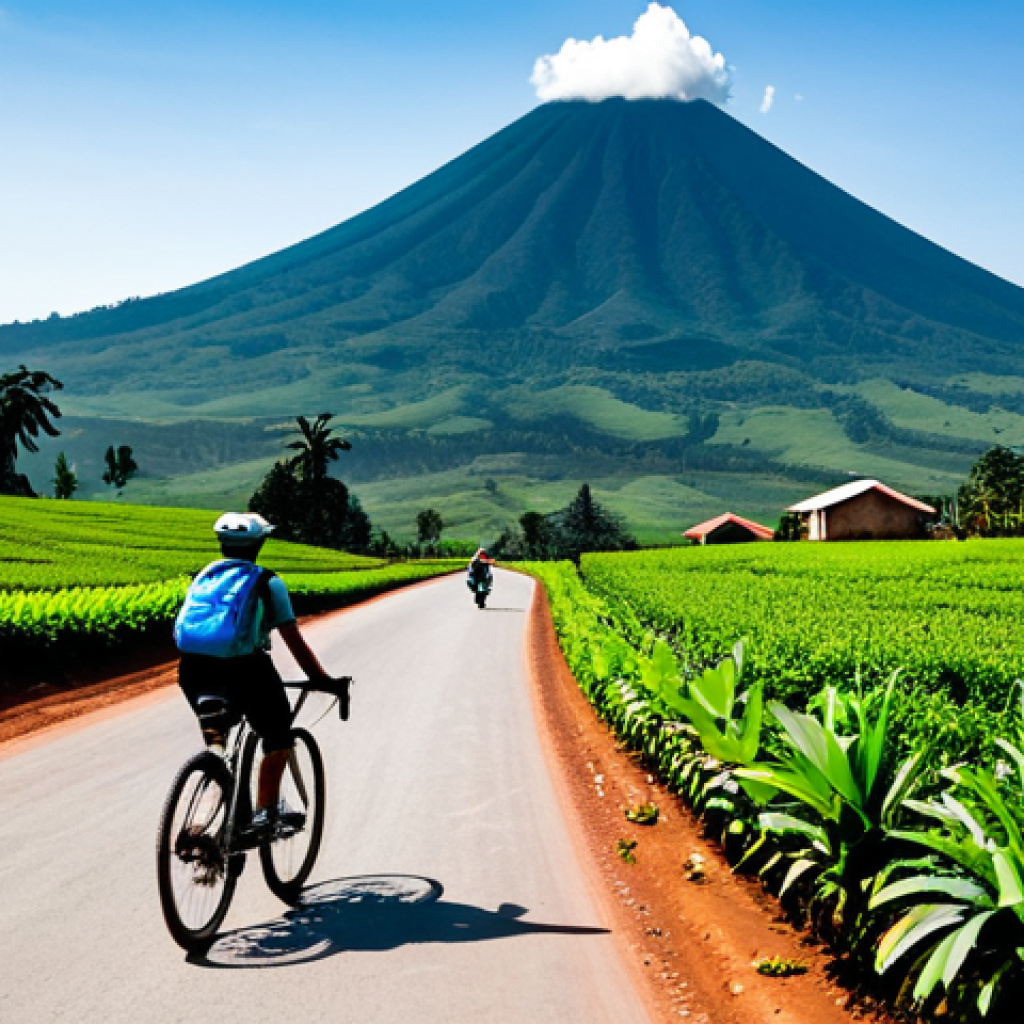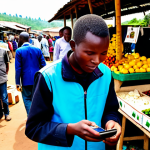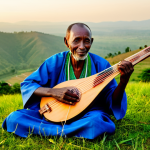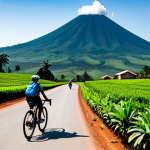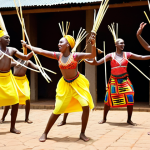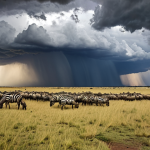Imagine the crisp morning air, the scent of damp earth after a light rain, and the rhythmic whir of tires on a winding road. That’s Rwanda. Not just a place on a map, but a vibrant tapestry of emerald hills and resilient spirits.
When I first considered a cycling tour here, I wasn’t entirely sure what to expect. Would it be too challenging? Too remote?
But what I discovered was an adventure unlike any other, a truly transformative journey on two wheels. There’s something uniquely profound about navigating Rwanda’s ‘Land of a Thousand Hills’ by bicycle; every uphill climb earns you a breathtaking vista, and every downhill coast fills you with pure, unadulterated joy.
It’s an intimate way to connect, to feel the pulse of the local communities as you cycle through bustling villages and past lush tea plantations. You’re not just a spectator; you’re truly immersed, feeling the warmth of every “Mwaramutse!” (Good morning!) shouted by smiling children.
This kind of active, sustainable travel is definitely a rising trend, as more people, myself included, yearn for genuine, off-grid experiences that go beyond mere sightseeing and truly contribute to the local economy.
It’s an investment in memories, a challenge overcome, and a deeper understanding of a truly remarkable nation.
If you’re ready to pedal into an unforgettable adventure, let’s explore it in detail.
Pedaling Through Emerald Landscapes: My First Impressions
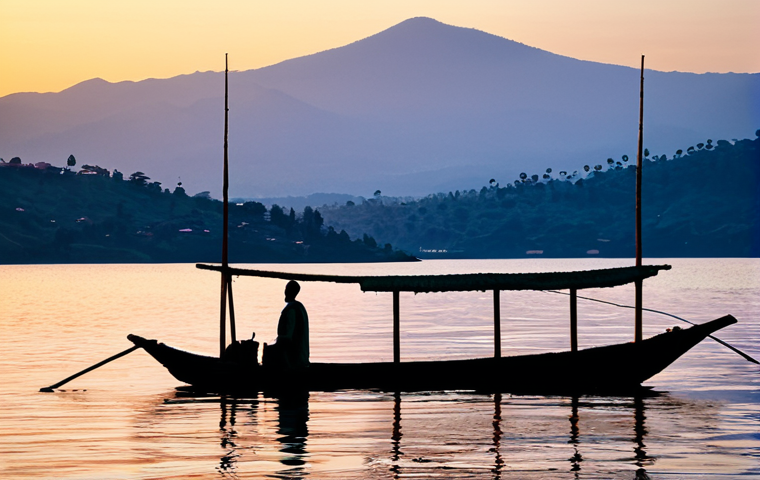
Honestly, when I first planned my cycling trip to Rwanda, I had visions of daunting climbs and endless, challenging roads. While the ‘Land of a Thousand Hills’ certainly lives up to its name with elevation changes that test your mettle, what truly surprised me was the sheer, overwhelming beauty that unfolded with every turn of the pedal. I remember one particular morning, cresting a hill after a challenging ascent, and the world just opened up. Below me stretched a patchwork quilt of impossibly green tea plantations, their rows like neat stitches across the hills, interspersed with vibrant banana groves. The air was crisp, carrying the distant sound of village life, and the panoramic views of distant volcanoes like Mount Karisimbi piercing the hazy sky were just breathtaking. It wasn’t just a scenic view; it was an emotional experience, a reward so profound that every ounce of effort felt completely justified. This isn’t just about cycling; it’s about witnessing a landscape so alive and vibrant, it feels like it’s breathing with you.
1. The Unforgettable Ascent to Jaw-Dropping Vistas
Each climb in Rwanda felt like a personal triumph, culminating in a visual feast. There’s a particular stretch near Musanze where the road winds relentlessly upwards, but the higher you get, the more expansive the view becomes. I recall pulling over, heart pounding not just from the exertion but from the sheer awe, watching local farmers tending their crops on terraced hillsides, seemingly suspended between earth and sky. It’s an immersion into a landscape that truly defies description, offering perspectives you simply can’t get from a car window. You earn these views, and that makes them infinitely more special. The sweat, the burning legs – it all melts away when you’re presented with such an exquisite tableau, a reward that always felt richer and more fulfilling than I could have ever imagined from the photos I’d seen online. It’s a sensory overload in the best possible way, from the cool breeze at the summit to the vivid greens and blues stretching to the horizon.
2. Immersive Cultural Encounters on Two Wheels
Beyond the physical challenge, cycling opened doors to truly authentic cultural interactions. Unlike being in a tour bus, on a bicycle, you’re part of the fabric of daily life. I vividly remember passing through small villages where children would run alongside my bike, laughing and shouting “Muzungu!” (foreigner), their smiles infectious. One afternoon, a group of women carrying baskets of produce on their heads waved enthusiastically, and I waved back, feeling an immediate, unprompted connection. There was a moment I stopped for a break, leaning my bike against a small shop, and within minutes, curious locals gathered, eager to chat and share stories, despite the language barrier. These spontaneous interactions, the shared smiles and gestures, were just as impactful as any planned cultural visit. It’s these small, genuine moments that transform a trip into a profound memory, forging a bond with the local community that feels uniquely personal and deeply touching.
3. The Unique Rhythm of Rural Rwandan Life
Cycling through rural Rwanda, you quickly fall into the rhythm of the land and its people. Mornings bring the sounds of roosters, the gentle hum of activity as communities awaken, and the scent of woodsmoke. I loved watching daily life unfold: people walking to market, children in school uniforms heading to class, women drawing water from wells. There’s a certain calm, a resilience in their everyday existence, that is deeply inspiring. It’s a stark contrast to the fast-paced life I’m used to, and it encourages you to slow down, to observe, and to truly be present. This unhurried pace allows for deeper observation, for noticing the intricate details of local architecture, the vibrant colours of traditional clothing, and the industrious nature of Rwandan farming. It’s a gentle reminder to appreciate the simple things, to breathe deeply, and to embrace the quiet beauty of a life lived in harmony with the land.
Navigating the ‘Land of a Thousand Hills’: Route Planning & Challenges
Planning a cycling tour in Rwanda requires a certain level of foresight, but it’s far from insurmountable. When I was putting together my itinerary, I spent hours poring over maps, elevation profiles, and testimonials from other cyclists. What quickly became clear was the diversity of routes available, catering to various fitness levels and preferences. From the gentle undulations around Lake Kivu to the more demanding ascents in the Volcanoes National Park region, there’s a path for everyone. However, irrespective of your chosen route, it’s crucial to understand that Rwanda is, indeed, a land of hills. Even the ‘flat’ sections are rarely truly flat for long. I personally found that embracing the climbs as part of the adventure, rather than obstacles, significantly improved my mental game. Hydration and nutrition are non-negotiable, and I quickly learned to appreciate the small roadside shops selling bottled water and local snacks as invaluable pit stops. The heat, especially at lower altitudes, can be intense, making early morning starts a wise strategy. It’s not just about physical preparedness; it’s about mental resilience and a flexible mindset.
1. Choosing Your Path: From Gentle Rolling Hills to Epic Climbs
Rwanda offers a surprising range of cycling experiences. For those looking for a more relaxed tour, the routes around Lake Kivu provide stunning lakeside views with manageable climbs and descents. I personally enjoyed the scenic beauty and the refreshing lake breeze after a long ride. For the more adventurous, routes leading towards Volcanoes National Park or traversing the central highlands present significant challenges, with ascents that can test even seasoned cyclists. I opted for a mix, starting with some easier sections to get acclimated before tackling some of the steeper, longer climbs. This approach allowed me to build confidence and enjoy the journey without feeling overwhelmed. It’s really about aligning the route with your personal goals and fitness level. Don’t be afraid to ask local tour operators for advice; their insights into road conditions and typical weather patterns are invaluable. Some routes are predominantly paved, while others might involve gravel or dirt tracks, adding another layer of adventure (and sometimes, a lot of dust!).
2. Essential Gear for Rwandan Cycling Adventures
Having the right gear made all the difference to my comfort and safety. I quickly learned that a sturdy, well-maintained mountain bike or a gravel bike with good gearing is essential for tackling the varied terrain. Beyond the bike itself, here’s a quick overview of what I found to be absolutely crucial for my journey. This isn’t an exhaustive list, but it covers the essentials that I personally relied on and would recommend to anyone planning a similar trip. Being prepared meant I could focus on the incredible experience, rather than worrying about equipment failures or discomfort. For me, investing in quality gear, especially a good helmet and puncture-resistant tires, was a no-brainer for peace of mind. And don’t forget a reliable repair kit – punctures are an almost inevitable part of any long-distance cycling adventure!
| Item | Why It’s Essential in Rwanda | My Personal Experience/Tip |
|---|---|---|
| Mountain/Gravel Bike | Handles diverse terrain (paved, dirt, gravel) and steep climbs. | Ensure good gearing. My 2×10 setup was perfect for the hills. |
| Helmet | Non-negotiable for safety, especially on winding, sometimes busy roads. | Look for good ventilation to stay cool in the sun. |
| Hydration Pack/Bottles | Crucial for staying hydrated on long, hot climbs. | Carried at least 3 liters capacity; water sources can be sparse. |
| Sunscreen & Hat | Strong equatorial sun can cause rapid sunburn. | Applied liberally multiple times a day; a wide-brimmed hat for stops. |
| Repair Kit & Pump | Punctures are common; local repair shops aren’t always available. | Learned to change a tire beforehand – a lifesaver! |
| Light Rain Jacket | Sudden tropical downpours are possible, even in dry seasons. | A breathable, packable one was invaluable for unexpected showers. |
3. Overcoming the Altitude and Terrain
The altitude in Rwanda, particularly in areas like Musanze (around 1,850 meters or 6,000 feet), definitely adds another layer of challenge. My first few days, I felt the thin air, particularly on longer climbs, and found myself taking more frequent breaks than usual. It’s not debilitating, but it requires respecting your body and pacing yourself. Hydration becomes even more critical at altitude. The terrain itself is incredibly dynamic; one moment you’re cruising on smooth tarmac, the next you’re grinding up a steep, unpaved track. I loved the variety, but it certainly kept me on my toes. The sheer physical output required means you’ll be burning through calories, so keeping snacks handy – local fruit like bananas and passion fruit were my go-to – is vital. It’s a journey that challenges you physically but rewards you immensely with the sense of accomplishment and the stunning views you earn. I truly felt myself growing stronger each day, adapting to the unique demands of the Rwandan landscape.
Beyond the Bike: Connecting with Rwandan Culture and Community
My journey through Rwanda was never just about the cycling; it was deeply intertwined with the vibrant culture and the incredibly warm people I encountered. One of the most enriching aspects of traveling by bicycle is the unparalleled access it grants you to local life. You’re not separated by a car window; you’re open, exposed, and approachable. This immediate connection often led to unexpected invitations and profound interactions. I found myself sharing impromptu cups of local coffee, learning a few basic Kinyarwanda phrases, and simply sitting and observing the rhythm of daily life in villages. These moments, far more than any curated experience, were the true highlights of my trip. They fostered a sense of belonging and understanding that would have been impossible through any other mode of travel. It felt like I wasn’t just visiting Rwanda; I was, for a brief period, living within its beautiful narrative.
1. Savoring Local Flavors: Culinary Delights on the Road
Cycling builds a serious appetite, and Rwanda’s local cuisine did not disappoint! Stopping at small roadside eateries, locally known as ‘restaurants’, became a daily ritual I eagerly anticipated. I vividly remember one humble spot where I was served a plate piled high with ‘Isombe’ (pounded cassava leaves with dried fish or meat), ‘Ibitoke’ (cooked plantains), and a generous portion of beans and rice. It was simple, hearty, and incredibly flavorful – the perfect fuel after a long ride. The freshness of the produce was astonishing; vegetables tasted like they’d just been plucked from the earth. Street food was also a delight: grilled corn on the cob, roasted sweet potatoes, and the ubiquitous ‘brochettes’ (skewered meat, usually goat or beef). I encouraged myself to try everything, even if I wasn’t entirely sure what it was, and was always pleasantly surprised. These culinary adventures weren’t just about food; they were a window into the local way of life, a chance to share a meal and a smile with friendly proprietors and fellow diners. It’s an experience that truly connects you to the heart of Rwandan hospitality.
2. Heartfelt Interactions with Local Families
The warmth and generosity of the Rwandan people left an indelible mark on me. There was an occasion when I stopped to fix a minor mechanical issue, and a family from a nearby homestead immediately came out, offering help and inviting me for tea. Despite the language barrier, their hospitality was palpable. We communicated through gestures and shared laughter, and I felt completely at ease in their humble home. Children, in particular, were endlessly curious and friendly, often waving enthusiastically or attempting to race me on foot. These spontaneous encounters, away from tourist hubs, were incredibly moving and shed light on the resilience and open-heartedness that defines Rwandan culture. It’s these human connections, forged in unexpected moments, that elevate a trip from a simple vacation to a profoundly personal journey. I learned more about true generosity from these interactions than from any guide book.
3. Supporting Sustainable Tourism and Local Artisans
As an advocate for responsible travel, I made a conscious effort to support local businesses and initiatives during my trip. When purchasing souvenirs, I sought out local craft markets and cooperatives, ensuring that my money directly benefited the artisans and their communities. I particularly loved the intricate basket weaving and vibrant paintings created by local artists. Beyond souvenirs, choosing locally-owned guesthouses and eating at small, family-run restaurants contributed directly to the local economy. Many cycling tour operators in Rwanda also prioritize community engagement, employing local guides and staff, and sourcing supplies locally. By engaging with these businesses, I felt a deeper sense of purpose in my travels, knowing that my adventure was not only enriching for me but also for the people and places I visited. It’s a beautiful cycle of giving and receiving, where your travel dollars become a direct investment in the well-being and prosperity of the host community.
Wildlife Wonders & Natural Beauty: Discovering Rwanda’s Hidden Gems
Rwanda’s natural beauty extends far beyond its rolling hills and agricultural landscapes. While the gorillas are, of course, the most famous draw, my cycling journey opened my eyes to a remarkable diversity of ecosystems and wildlife that often goes unnoticed by those who only focus on the primate encounters. The sheer variety of natural landscapes, from the misty montane forests to the shimmering lakes, meant that every day offered a new visual delight and a chance to spot unique flora and fauna. I felt a sense of quiet reverence as I pedaled through areas that were clearly untouched, reminding me of the country’s profound commitment to conservation. It’s a place where nature is not just a backdrop but an active participant in your journey, constantly surprising and enchanting you with its raw, untamed beauty. The air itself felt cleaner, fresher, a testament to the lush, green environment.
1. The Serene Shores of Lake Kivu
Cycling along the shores of Lake Kivu was a truly tranquil experience, a stark contrast to the vigorous climbs elsewhere. The lake, one of Africa’s Great Lakes, is an expansive, shimmering body of water fringed by verdant hills and fishing villages. I remember one afternoon, after a long ride, just sitting by the water’s edge, watching the traditional wooden fishing boats with their distinctive triple masts glide across the calm surface as the sun dipped below the horizon, painting the sky in hues of orange and purple. The air was soft, carrying the faint sounds of distant life. It’s a perfect spot for a rest day, perhaps indulging in a refreshing swim or taking a boat trip. The roads around the lake are generally less steep, offering a gentler ride that allows you to truly soak in the peaceful ambiance and stunning vistas. It felt like a truly restorative pause in an otherwise active adventure, a moment to simply breathe and appreciate the serene beauty of this often-overlooked gem.
2. Spotting Primates in the Verdant Forests
While my cycling tour focused primarily on exploring the landscape by bike, Rwanda’s unparalleled primate experiences are easily incorporated. I took a day off from cycling to embark on a gorilla trekking adventure in Volcanoes National Park, and it was, without a doubt, one of the most awe-inspiring moments of my life. Coming face-to-face with a family of mountain gorillas in their natural habitat is an indescribable feeling – a profound sense of connection with these magnificent creatures. Beyond gorillas, Nyungwe Forest National Park, also accessible for those willing to venture further, is home to chimpanzees and numerous other primate species. The guides are incredibly knowledgeable, and their passion for conservation is infectious. Integrating one of these treks into your cycling itinerary offers a beautiful balance of physical exertion and profound wildlife encounters, making your Rwandan adventure even more comprehensive and unforgettable. It’s an investment, but one that yields immeasurable returns in terms of sheer wonder and connection to the natural world.
3. The Abundant Birdlife of Rwanda
As a keen observer of nature, I was constantly delighted by Rwanda’s prolific birdlife. Even while cycling along the roadside, flashes of brilliant color would catch my eye. Sunbirds, weavers, and kingfishers were regular sightings, particularly around water sources and forested areas. In national parks, the variety exploded. I remember pausing during one ride to watch a pair of Great Blue Turacos, their vibrant plumage almost iridescent in the sunlight. Birdwatching isn’t just for dedicated ornithologists; even for a casual observer like me, the sheer diversity and beauty of the avian population added another layer of richness to the journey. The symphony of bird calls from the dense foliage was a constant companion, a vibrant soundtrack to my cycling adventure. It’s a subtle but constant reminder of the incredible biodiversity that thrives within this small, resilient nation, adding an unexpected layer of enchantment to every single day on the bike.
Practicalities for Your Rwandan Cycling Journey
Beyond the romance of the open road and cultural immersion, planning a practical cycling trip to Rwanda involves considering several key logistical aspects. From where you’ll rest your head at night to how you’ll manage your budget, a little foresight goes a long way in ensuring a smooth and enjoyable experience. I learned quickly that while spontaneity has its charms, having a general framework for accommodations and knowing how to manage local currency made my journey significantly less stressful. It’s all about balancing adventure with preparedness, allowing you to fully immerse yourself in the Rwandan experience without being bogged down by avoidable issues. Understanding the local economic landscape and how to navigate it ensures that your trip is not just memorable, but also respectful of the local way of life. I always recommend carrying a mix of local currency and a major credit card, just in case.
1. Accommodation Options: From Guesthouses to Eco-Lodges
Rwanda offers a range of accommodation options that cater to different budgets and preferences. In larger towns like Kigali, Musanze, and Rubavu (Gisenyi), you’ll find everything from comfortable hotels to charming guesthouses. I personally gravitated towards locally-owned guesthouses, which often provided a more authentic experience and an opportunity to interact with local families running the establishments. In more rural areas, choices might be simpler, but they often come with incredible views and a profound sense of tranquility. Eco-lodges, many of which prioritize sustainability and community engagement, are also becoming increasingly popular, offering a unique blend of comfort and environmental consciousness. Booking ahead, especially during peak season, is advisable, though I found that impromptu stops in smaller villages often yielded delightful, unexpected finds. Always check for bike storage facilities when booking – a small but important detail for cyclists.
2. Budgeting for an Authentic Adventure
Cycling in Rwanda can be tailored to various budgets. While gorilla trekking permits are a significant expense, the day-to-day costs of cycling can be quite reasonable. Local food is incredibly affordable and delicious, and simple guesthouses offer good value. Transportation within the country, if you need to bypass a section or transport your bike, is also relatively inexpensive. My personal strategy involved a mix of pre-booked tours for specific activities (like gorilla trekking) and independent cycling for the rest, which allowed me to control costs while maximizing unique experiences. I found that carrying Rwandan Francs (RWF) for small purchases and local interactions was essential, as many rural vendors don’t accept cards. ATMs are available in larger towns, but it’s always wise to have enough cash for a few days, especially if you’re venturing off the main routes. Remember to factor in potential bike maintenance or spare parts into your budget, as these unexpected costs can sometimes arise.
3. Health & Safety: Staying Prepared
Prioritizing health and safety is paramount for any international cycling trip, and Rwanda is no exception. Before departing, consulting with your doctor about necessary vaccinations (including yellow fever, which is mandatory for entry) and malaria prophylaxis is crucial. I also made sure to pack a comprehensive first-aid kit, including remedies for common cycling ailments like chafing and blisters, as well as any personal medications. Road conditions can vary significantly, from smooth asphalt to rough gravel, and traffic, though generally respectful of cyclists, can be unpredictable in busy areas. Wearing bright clothing, using lights, and exercising defensive cycling techniques are essential. It’s also wise to have travel insurance that covers adventurous activities like cycling. While Rwanda is a remarkably safe country, being prepared for common travel eventualities ensures peace of mind and allows you to fully enjoy your adventure without unnecessary worries. I also kept emergency contact numbers stored prominently on my phone, just in case.
The Transformative Power of Pedaling in Rwanda
There’s something uniquely profound about traversing a country by bicycle, especially one as dynamic and captivating as Rwanda. It strips away the superficial layers of travel, demanding physical exertion while simultaneously offering unparalleled access to the heart and soul of a place. My cycling journey through the Land of a Thousand Hills wasn’t just a vacation; it was a deeply personal odyssey, challenging me in ways I hadn’t anticipated and rewarding me with experiences that transcended mere sightseeing. The rhythm of the pedals, the ebb and flow of the hills, and the constant sensory input created a meditative state, allowing for reflection and a deeper connection to myself and the environment around me. It truly felt like a journey of growth, where every uphill struggle was met with a breathtaking vista, and every interaction deepened my understanding of this incredible nation. It’s a trip that stays with you long after the last pedal stroke.
1. Building Resilience: Conquering Personal Limits
I won’t lie; there were moments on those long, steep Rwandan climbs where I questioned my sanity. My legs burned, my lungs ached, and the sun beat down. But each time I pushed through, each time I reached the summit and looked back at the ground I’d covered, a profound sense of accomplishment washed over me. This journey wasn’t just about conquering hills; it was about conquering perceived personal limits. It taught me resilience, patience, and the sheer power of persistence. The physical challenge became a metaphor for life’s challenges, instilling a belief that with enough determination, almost anything is achievable. I felt stronger, not just physically, but mentally. That feeling of pushing your boundaries, of discovering strength you didn’t know you possessed, is one of the most empowering aspects of a cycling adventure in a place like Rwanda. It truly changes your perception of what you’re capable of achieving.
2. A Journey of Reflection and Perspective
Beyond the physical exertion, cycling in Rwanda offered an incredible opportunity for quiet reflection. The hours spent on the saddle, immersed in the landscape, provided ample time for introspection. I found myself contemplating the resilience of the Rwandan people, the beauty of their spirit, and the profound lessons of their history. Witnessing daily life firsthand, seeing communities thrive in the very places that once knew unimaginable tragedy, instilled in me a deep sense of hope and an appreciation for the human capacity to rebuild and forgive. It put my own life, my own challenges, into a broader, more humbling perspective. This wasn’t just a passive journey; it was an active engagement with a nation’s story, allowing for a depth of understanding and empathy that few other travel experiences can provide. It’s a journey that doesn’t just show you a place; it changes how you see the world, and indeed, yourself.
3. The Unforgettable Echo of Rwandan Hospitality
As I reflect on my Rwandan cycling adventure, what truly resonates, above all else, is the warmth and genuine kindness of the Rwandan people. From the enthusiastic waves of children to the welcoming smiles of strangers, the sense of hospitality was pervasive and deeply moving. It wasn’t just politeness; it was a profound generosity of spirit that made me feel not just like a visitor, but like a welcomed guest. This indelible impression of warmth and resilience is the most powerful souvenir I brought home. It’s a country that captures your heart, not just with its stunning landscapes and challenging rides, but with the spirit of its people. Every time I think of Rwanda, it’s these human connections, these moments of shared smiles and unexpected kindness, that flood my mind. They are the true gems of the Land of a Thousand Hills, echoing in my memory, inviting me to return.
Wrapping Up
As I reflect on the miles pedaled and the memories made, my cycling journey through Rwanda stands out as one of the most enriching adventures of my life. It wasn’t just about conquering hills or ticking off destinations; it was about connecting, truly connecting, with a vibrant land and its incredibly resilient people. Every turn of the wheel unveiled a new layer of beauty, a new story, and a deeper understanding. This is a destination that doesn’t just invite you to visit; it invites you to participate, to breathe in its essence, and to leave with a heart full of gratitude and a spirit profoundly renewed. If you’re seeking an adventure that challenges your body and nourishes your soul, look no further.
Useful Information to Know
1. Visa & Entry: Most nationalities require a visa for Rwanda, which can typically be obtained online prior to travel or upon arrival at Kigali International Airport. Always check the latest requirements from your local embassy or the Rwandan Directorate General of Immigration and Emigration website before your trip.
2. Best Time to Visit: The dry seasons (June to September and December to February) are generally considered the best for cycling, offering less rain and more consistent weather. However, Rwanda’s equatorial climate means that rain can occur at any time, often in short, heavy showers, so a light rain jacket is always a good idea.
3. Local Currency & Payments: The local currency is the Rwandan Franc (RWF). While major hotels and some larger shops accept credit cards, cash is essential for smaller purchases, local restaurants, and interactions in rural areas. ATMs are available in larger towns like Kigali, Musanze, and Rubavu.
4. Connectivity: Local SIM cards from providers like MTN or Airtel are readily available and affordable, offering good data coverage in urban and semi-urban areas. Signal can be spotty in very remote, mountainous regions, so download offline maps if you plan to venture far off the beaten path.
5. Cultural Etiquette: Rwandans are generally very polite and welcoming. Learning a few basic Kinyarwanda phrases like “Muraho” (hello), “Murakoze” (thank you), and “Ndashaka amazi” (I want water) can significantly enhance your interactions. Always ask for permission before taking photos of people, especially in rural settings, out of respect.
Key Takeaways
Cycling in Rwanda offers an unparalleled blend of physical challenge and profound cultural immersion. Be prepared for the ‘Land of a Thousand Hills’ with appropriate gearing and physical readiness, but anticipate breathtaking emerald landscapes and genuinely warm interactions. Essential gear, including a sturdy bike and hydration, is crucial for a smooth journey. Embrace the local culture through its delicious and affordable cuisine, and actively seek opportunities to connect with local communities. Integrating iconic wildlife encounters like gorilla trekking can elevate your adventure. Ultimately, a Rwandan cycling trip is a transformative experience, building resilience and offering unique perspectives on life and the enduring spirit of its people and land.
Frequently Asked Questions (FAQ) 📖
Q: How challenging is cycling in Rwanda, given its nickname ‘Land of a Thousand Hills’? Do I need to be a super-fit cyclist?
A: Honestly, yes, it can be a real workout! When I first looked at the elevation maps, my calves started aching just from the thought. But let me tell you, that’s part of the magic.
It’s not about being a super-athlete; it’s about embracing the challenge and knowing that every single uphill climb, even the ones that make you question your life choices, is immediately rewarded with an absolutely jaw-dropping descent or a panorama that steals your breath away – in a good way this time!
Most tours are structured with varying levels, and local guides are incredibly supportive. I saw people of all fitness levels out there, and what truly mattered was a good attitude and a willingness to push a little.
Plus, the breaks for fresh fruit or a chat with locals always made it worthwhile. You’re not racing; you’re experiencing.
Q: You mentioned truly connecting with local communities and contributing to the local economy. How does cycling achieve this more than other forms of travel?
A: This is where the cycling really shines, and it’s why I advocate for it so strongly. Unlike zipping by in a tour bus, on a bike, you’re moving at a human pace.
You pass through villages, not just past them. I distinctly remember stopping to buy some sweet potatoes from a vendor by the road, and the pure, unadulterated joy on their face when I tried out my clumsy “Mwaramutse!” – it just melts your heart.
You’re supporting small businesses directly, whether it’s a tiny roadside stall, a guesthouse run by a local family, or even just hiring a local guide who knows every single shortcut and hidden gem.
It feels much more authentic. It’s not just a transaction; it’s a genuine interaction. Your money stays right there, helping build up these incredible communities, and you leave feeling like you truly made a difference, not just left a footprint.
Q: What kind of practical preparations should someone make for a cycling tour in Rwanda?
A: re there any unexpected things one should know? A3: Great question, because preparation definitely makes the experience smoother. Beyond getting your legs ready for those hills, definitely invest in good quality cycling gear – a comfortable saddle is non-negotiable, trust me!
Sunscreen is your best friend, even on cloudy days, and a good pair of gloves will save your hands. Hydration is key; carry plenty of water, as some stretches can be remote.
Unexpectedly, I found packing a small, waterproof daypack invaluable for sudden showers or carrying snacks. Also, be open to the unexpected! Road conditions can change, and you might encounter livestock on the path – it all adds to the adventure.
Embrace the local pace; things might not always run on a strict schedule, but that’s part of its charm. And finally, bring a sense of humor and a willingness to be completely enchanted – Rwanda has a way of doing that to you.
📚 References
Wikipedia Encyclopedia
구글 검색 결과
구글 검색 결과
구글 검색 결과
구글 검색 결과
구글 검색 결과
